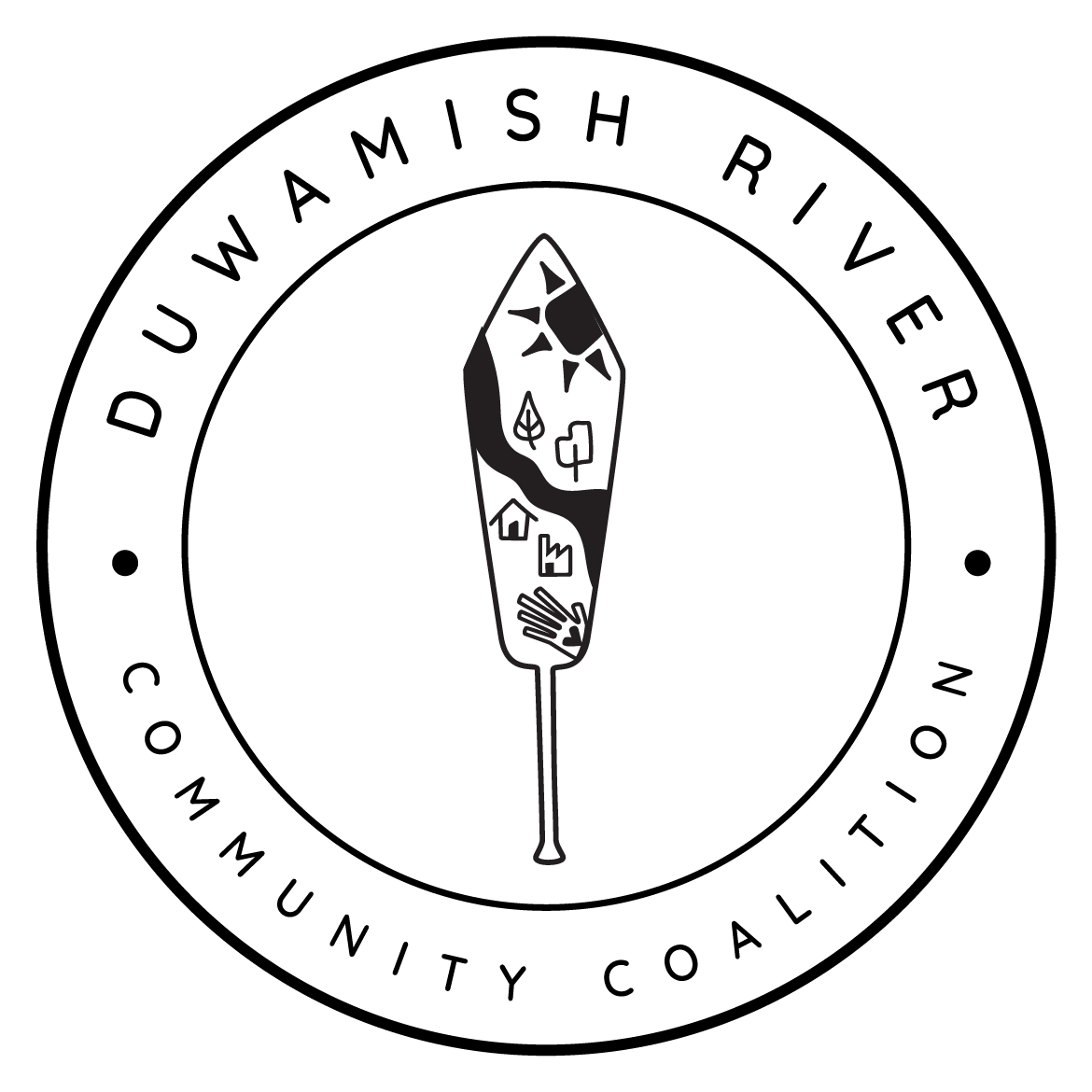Duwamish Valley Clean Air FAQ
Question: Why care about air quality in the Duwamish Valley?
Guidance: Within Seattle, the Duwamish Valley bears a disproportionate amount of air pollution. The 2013 Duwamish Valley Cumulative Health Impacts Analysis (CHIA), published by Just Health Action and the Duwamish River Cleanup Coalition/TAG (DRCC/TAG), compared air pollution indicators within Beacon Hill, Georgetown, and South Park to other areas in Seattle. This area ranked highest for air pollution levels in terms of diesel particulates and second highest for benzene. In addition, the Duwamish Valley contains the highest number of known or suspected contaminated waste sites and Toxic Release Inventory sites.
Question: How can air pollution impact my health?
Guidance: Air pollution can impact everyone’s health in various ways, including immediate and long-term impacts to the lungs, respiratory system, and other. Immediate effects include asthma attacks. On average, the Duwamish Valley has double the number of asthma hospitalizations among youth than the rest of King County (CHIA, 2013). Similarly, adults in the valley experience higher rates of asthma hospitalizations. Air pollution also overly impacts expectant mothers and children. It is linked to lower birth weights, pre-term deliveries, and possible fetal and infant mortality. Long-term effects on developing lungs can include asthma, reduced lung function and inflammation, heart and suppressed immune diseases, and cancer. Breathing certain air pollutants, such as tiny particulates (PM 2.5), benzene, and other chemicals, over long periods can lead to cancer. Of all the air pollutants in the Duwamish Valley, diesel exhaust contributes the most to a person’s risk for cancer.
Question: Primary sources of air pollution in the Duwamish Valley
Guidance: Multiple sources contribute to air pollution in the valley, including diesel exhaust, car exhaust, wood smoke, industrial emissions, marine vessels, and natural sources – like dust and sea salt (Figure 3). Of particular concern are trucks and other equipment releasing diesel exhaust and nitrogen dioxide. The University of Washington and Puget Sound Sage (DEEDS, 2013) found that diesel exhaust is highest near busy roadways in the Duwamish Valley. While diesel exhaust is lower in the residential areas of South Park and Georgetown, these areas still have higher levels of diesel exhaust than many other neighborhoods in Seattle.
Question: How does the Duwamish Valley’s outdoor air compare to other areas?
Guidance: In the national context, the Duwamish Valley has better air quality than large urban areas, such as Los Angeles (Figure 4). However, based on an annual average, the Duwamish Valley experiences worse outdoor air for most types of air pollution than the rest of Washington State (Air Quality Data Summary, 2013). At the local level, the top of Beacon Hill, which sits within a mile of the Duwamish Valley, has some of the best air quality in Puget Sound. This neighborhood sits on top of a hill with more wind and air mixing while the Duwamish Valley experiences less of this and, in the winter months, stagnant weather. This prevents pollution from leaving the valley.
Resources on Air & Health
Learn about Asthma - Asthma is a serious, sometimes life-threatening chronic respiratory disease that affects the quality of life for more than 24 million Americans, including an estimated 6 million children. Although there is no cure for asthma yet, asthma can be controlled through medical treatment and management of environmental triggers. EPA is committed to educating all Americans about asthma so that everyone knows what asthma is, how the environment can affect asthma patients, and how to manage environmental asthma triggers.
WA Environmental Health Disparity Map - The Washington Environmental Health Disparities Map is an interactive mapping tool that compares communities across our state for environmental health disparities.
The map shows pollution measures such as diesel emissions and ozone, as well as proximity to hazardous waste sites. In addition, it displays measures like poverty and cardiovascular disease.
Read about the DRCC fact sheet on Ardagh Glass Company here
The largest green wall in Seattle is located in Georgetown
South Park installs its first green wall at the South Park Branch Library
Resources for Wildfire Smoke
Check the current air quality (AQI) and what this means for your health here: http://map.pscleanair.gov/
Cómo mantener el aire interior limpio en días de humo/ How to keep indoor air clean on smokey days via King County Public Health Insider
Cómo construir tu propio filtro de aire?/ How to build your own air filter?
King County Wildfire Smoke Basic Health Messages in Chinese, Russian, Filipino, Korean, Somali, Ukrainian, Punjabi, Spanish and Vietnamese
Check Puget Sound Clean Air Agency frequently for the latest air quality reports
Stay informed about hazards and threats in King County by signing up to receive Alert King County. It’s free, and you can choose to get notifications by text, email or phone
Did you know we office healthy home assessment and air conditioning improvements in the Duwamish Valley? For more information, send an email to contact@duwamishcleanup.org
PUT MAKE HOME AIR FILTER IMAGES HERE
